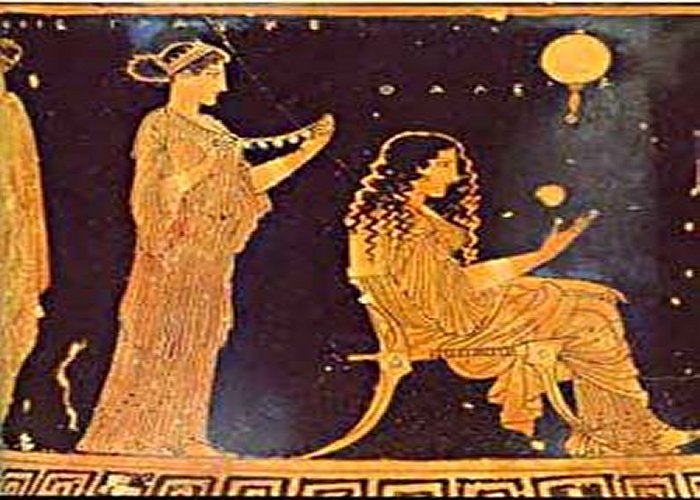Aglaonice (Aganice): Female Greek Astronomer From Thessaly Was Believed To Be A Witch
A. Sutherland - AncientPages.com - In ancient sources, Aglaonice (also Aganice) is mentioned as the first Greek female astronomer of the 2nd or 1st century BC and natural philosopher.
Very little is known about her, but it is confirmed that she gained fame because of her ability to predict lunar eclipses, probably, through observations.
According to Plutarch, Aglaonice made attempts to predict future events by the aid of celestial globes, and by the study of the constellations. Image source
The young woman was a Thessalian stargazer, intensely fascinated with the sky. Aglaonice’ s astronomical knowledge most probably dated back to early Egyptian and Babylonian times, when the stargazing, actively performed in both Egypt and the plains of Chaldea contributed with significant discoveries regarding the laws and movements of celestial bodies.
According to Plutarch (46–after 119 AD), she made attempts to predict future events by the aid of celestial globes, and by the study of the constellations. If so, Aglaonice was somewhat more competent in astrology rather than astronomy as we know it today.
Aglaonice was considered to be Greek and the daughter of king Hegetoris of Thessaly, an isolated region in the vicinity of the Olympus Mountain.
She was contemporary of Eratosthenes of Cyrene (276 BC – c. 195/194 BC) best known for being the first person to calculate the circumference of the Earth. She learned the regularities of the eclipse cycle, but for contemporary people who feared the unknown, such skills attested to the woman’s supernatural abilities.
However, the ability to forecast a lunar eclipse would be possible for anyone who was familiar with the periods of the full moon and the cycles of eclipses (the so-called ‘Metonic cycle’).
Babylonian astronomers were able to predict lunar eclipses and - later – accurate solar eclipses. Their tool was the Saros-cycle - a period of precisely 18 years and 11.3 days after which lunar and solar eclipses repeat themselves. This cycle was also known to Aglaonice.
She is mentioned in the writings of Plutarch, and Apollonius of Rhodes Rhodes (third century BC) as a female astronomer and the daughter of Hegetor (or Hegemon) of Thessaly.
Female Astronomer Was Believed To Be A Witch
She lived among the people who regarded her as a sorceress for her ability to make the moon disappear from the sky, but she ignored them all.
Ancient people did not understand how she could know the time and general area where a lunar eclipse would take place. Several young women who were believed to be sorcerers were associated with Aglaonice. They were known as the "witches of Thessaly" and were also active from the 3rd to 1st centuries BC.
See also:
Paracelsus: Physician, Alchemist, Philosopher Well Ahead Of His Time
Socrates: Great Philosopher And Brave Man Who Still Inspires Many People
Plutarch (46 Ad – 119 AD), Greek biographer and essayist, said once that she possessed knowledge of astronomy and astronomical computation. She was also familiar with the periods of the Full Moon and was able to foretell the exact time and place of lunar eclipses.
Plutarch was not among those who were impressed with Aglaonike’s astronomical skills. She was a dangerous woman because she could persuade other Thessalian women about her unique abilities.
According to him, she was a “witch” who intentionally wanted to deceive women around her because they had no astronomical training. A similar opinion about Aglaonike also had Plato (Gorgias 513), Horace (Epodes 5.45), and Virgil (Eclogues 8.69) and they all called the women of Thessaly - “Thessalian enchantresses,” equipped with magic powers, and with them, these witches were able to manipulate the moon and the sun, and make them disappear.
According to Sosiphanes, tragic poet of the 4th century BC, “every Thessalian maiden with magic songs [is] a false bringer-down of the moon from the sky…”
The ‘procedure’ was called the ‘Thessalian Trick.’
Written by - A. Sutherland - AncientPages.com Senior Staff Writer
Copyright © AncientPages.com All rights reserved. This material may not be published, broadcast, rewritten or redistributed in whole or part without the express written permission of AncientPages.com
Expand for referencesReferences:
Thorburn John E. The Facts on File Companion to Classical Drama
Eileen M. Byrne, Women In Science
Stories of Women Stargazers
http://buhlplanetarium2.tripod.com/bio/heveliuse/Stories_of_Women_Stargazers.pdf
More From Ancient Pages
-
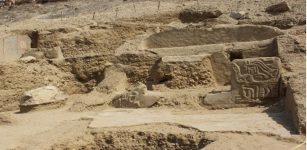 Pre-Inca Temple With Colored Paintings And Carved Sculptures Discovered At The Los Paredones Archaeological Complex, Peru
Archaeology | Jul 8, 2024
Pre-Inca Temple With Colored Paintings And Carved Sculptures Discovered At The Los Paredones Archaeological Complex, Peru
Archaeology | Jul 8, 2024 -
 3,500-Year-Old Tomb Discovered In Luxor – Who Is The Royal Buried Inside?
Archaeology | Jan 16, 2023
3,500-Year-Old Tomb Discovered In Luxor – Who Is The Royal Buried Inside?
Archaeology | Jan 16, 2023 -
 Överhogdal Tapestry: Amazingly Well-Preserved Ancient Textiles With Norse And Christian Motifs
Artifacts | Apr 26, 2019
Överhogdal Tapestry: Amazingly Well-Preserved Ancient Textiles With Norse And Christian Motifs
Artifacts | Apr 26, 2019 -
 Incredible Prehistoric Discoveries Made By A Local Community That Helped Researchers
Featured Stories | Mar 23, 2023
Incredible Prehistoric Discoveries Made By A Local Community That Helped Researchers
Featured Stories | Mar 23, 2023 -
 Facial Reconstruction Of Chinese Emperor Wu Who Lived 1,500 Years Ago
DNA | Mar 29, 2024
Facial Reconstruction Of Chinese Emperor Wu Who Lived 1,500 Years Ago
DNA | Mar 29, 2024 -
 2,ooo-Year-Old Ancient Roman Treasure Found Underwater Of The Coast Of Portofino, Italy
Archaeology | Jan 31, 2019
2,ooo-Year-Old Ancient Roman Treasure Found Underwater Of The Coast Of Portofino, Italy
Archaeology | Jan 31, 2019 -
 Tanana Valley, Alaska: Study On Ancient Hunter-Gatherer Sites Dating Back To 14,500 Years Ago
Archaeology | Mar 21, 2022
Tanana Valley, Alaska: Study On Ancient Hunter-Gatherer Sites Dating Back To 14,500 Years Ago
Archaeology | Mar 21, 2022 -
 Unexplained Cases Of Holographic Projections In Ancient And Modern Times
Featured Stories | Sep 14, 2018
Unexplained Cases Of Holographic Projections In Ancient And Modern Times
Featured Stories | Sep 14, 2018 -
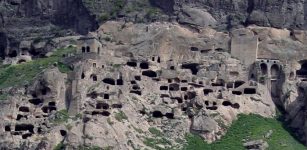 Uplistsikhe Devastated By Genghis-Khan Hordes But Once City-Fortress Of Queen Tamar
Featured Stories | Apr 12, 2021
Uplistsikhe Devastated By Genghis-Khan Hordes But Once City-Fortress Of Queen Tamar
Featured Stories | Apr 12, 2021 -
 Ancient Books, Scrolls And Manuscripts Burned By Church And Evil Emperors
Artifacts | Aug 27, 2018
Ancient Books, Scrolls And Manuscripts Burned By Church And Evil Emperors
Artifacts | Aug 27, 2018 -
 On This Day In History: Battle Of Svolder One Of Greatest Battles of Viking Scandinavia Was Fought – On Sep 9, 1000
News | Sep 9, 2016
On This Day In History: Battle Of Svolder One Of Greatest Battles of Viking Scandinavia Was Fought – On Sep 9, 1000
News | Sep 9, 2016 -
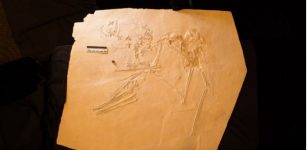 New Fossil Of 145-Million-Year-Old Pterosaur Nicknamed Elvis
Fossils | Jul 14, 2023
New Fossil Of 145-Million-Year-Old Pterosaur Nicknamed Elvis
Fossils | Jul 14, 2023 -
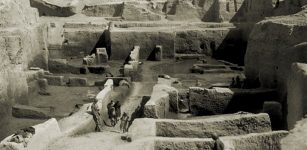 Iraq’s Ancient Kish City Survived The Great Flood – Today It’s Neglected And Lies Buried In Sand
Civilizations | Sep 24, 2015
Iraq’s Ancient Kish City Survived The Great Flood – Today It’s Neglected And Lies Buried In Sand
Civilizations | Sep 24, 2015 -
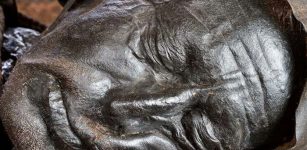 Mystery Of Europe’s Bog Body Phenomenon Solved By Scientists
Archaeology | Jan 12, 2023
Mystery Of Europe’s Bog Body Phenomenon Solved By Scientists
Archaeology | Jan 12, 2023 -
 8,000-Year-Old T-Shaped, Four-Sided Structure With Pyramidion – Uncovered in Turkey
Archaeology | Nov 23, 2019
8,000-Year-Old T-Shaped, Four-Sided Structure With Pyramidion – Uncovered in Turkey
Archaeology | Nov 23, 2019 -
 Ancient DNA Illuminates Unknown ‘Ghost’ Populations In Sub-Saharan Africa
Archaeology | Jan 22, 2020
Ancient DNA Illuminates Unknown ‘Ghost’ Populations In Sub-Saharan Africa
Archaeology | Jan 22, 2020 -
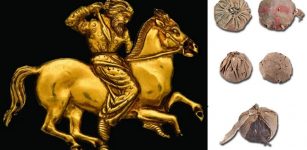 Eurasian Horse Riders Played Ball Games 3,000 Years Ago – Leather Balls Found In Graves Reveal
Archaeology | Oct 12, 2020
Eurasian Horse Riders Played Ball Games 3,000 Years Ago – Leather Balls Found In Graves Reveal
Archaeology | Oct 12, 2020 -
 Fionn Mac Cumhail: Legendary Irish Hero, Clairvoyant And Leader Of Fianna Warriors
Celtic Mythology | Oct 11, 2019
Fionn Mac Cumhail: Legendary Irish Hero, Clairvoyant And Leader Of Fianna Warriors
Celtic Mythology | Oct 11, 2019 -
 Mysterious Lost Tartessian Civilization And Its Ancient Tablet With Paleo-Hispanic Alphabet
Archaeology | Jun 15, 2024
Mysterious Lost Tartessian Civilization And Its Ancient Tablet With Paleo-Hispanic Alphabet
Archaeology | Jun 15, 2024 -
 Scientists Unravel The Mystery Of The Alexander Sawney Bean Legend & Cave-Dwelling Cannibals In Scotland
Myths & Legends | Sep 24, 2015
Scientists Unravel The Mystery Of The Alexander Sawney Bean Legend & Cave-Dwelling Cannibals In Scotland
Myths & Legends | Sep 24, 2015

